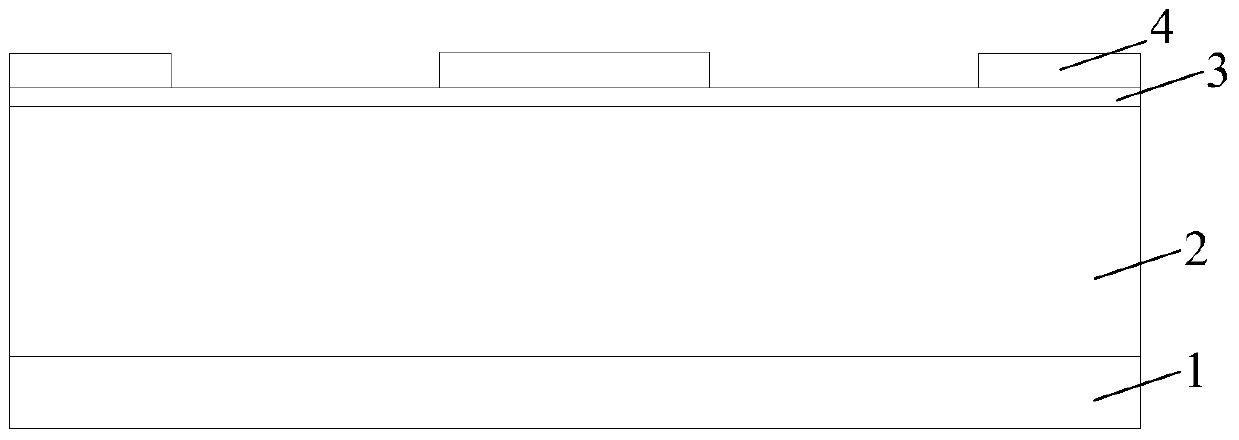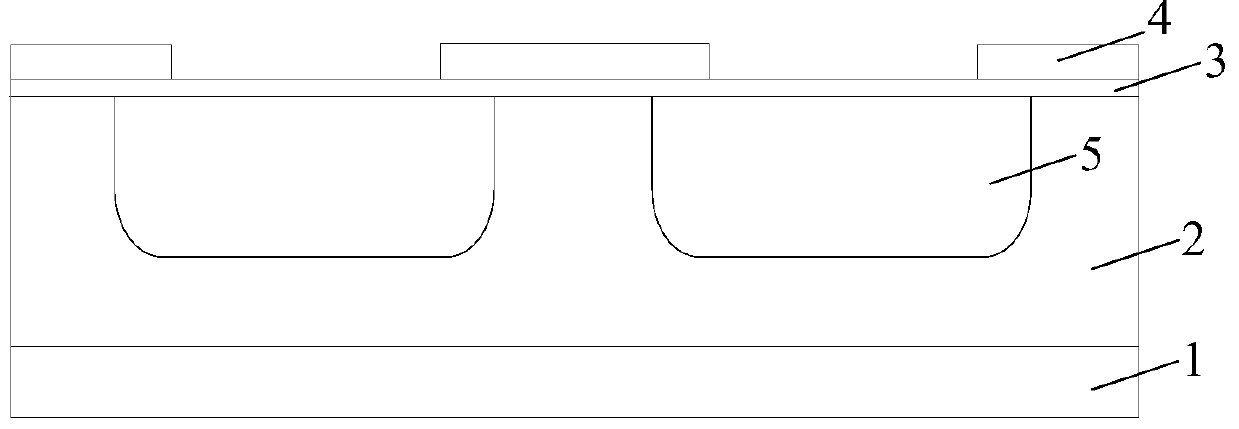A method of making vdmos
A manufacturing method and conductive type technology, applied in the field of VDMOS manufacturing method and a VDMOS device, can solve the problems of cumbersome device manufacturing process, high cost, large gate-drain capacitance, etc., save photolithography and etching steps, and increase local thickness , Reduce the effect of gate-drain capacitance
- Summary
- Abstract
- Description
- Claims
- Application Information
AI Technical Summary
Problems solved by technology
Method used
Image
Examples
Embodiment 1
[0073] The following takes the whole process of growing a VDMOS device as an example to describe the implementation method of the embodiment of the present invention in detail, see Figure 8 :
[0074] Step 801: Form a thick oxide layer on the epitaxial layer.
[0075] Figure 9 Among them, 1 is the N-type substrate, and 2 is the N-type epitaxial layer. In this step, at 900-1200°C, a plurality of block-shaped discrete thick oxide layers with a thickness of 0.5-2.0 μm are formed on the N-type epitaxial layer 2 13.
[0076] Step 802 : forming a gate oxide layer 3 .
[0077] In this step, the gate oxide layer 3 is formed between the N-type epitaxial layer 2 and the thick oxide layer 13. The growth temperature of the gate oxide layer is 900-1100° C., and the thickness is 0.05-0.20 μm. Oxygen, which oxidizes the interface, see Figure 10 .
[0078] Step 803: Fabricate polysilicon 4.
[0079] In this step, the growth temperature of the polysilicon 4 is 500-700° C., and the th...
PUM
 Login to View More
Login to View More Abstract
Description
Claims
Application Information
 Login to View More
Login to View More - R&D
- Intellectual Property
- Life Sciences
- Materials
- Tech Scout
- Unparalleled Data Quality
- Higher Quality Content
- 60% Fewer Hallucinations
Browse by: Latest US Patents, China's latest patents, Technical Efficacy Thesaurus, Application Domain, Technology Topic, Popular Technical Reports.
© 2025 PatSnap. All rights reserved.Legal|Privacy policy|Modern Slavery Act Transparency Statement|Sitemap|About US| Contact US: help@patsnap.com



